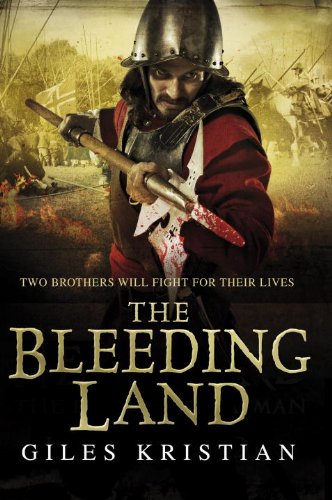The Bleeding Land
This is the first in a planned trilogy of novels set during the English Civil War, and this tale begins in 1642 with the country on the verge of war between an obdurate King and an assertive Parliament, a war about both political and religious beliefs, a war that will consume England.
In The Bleeding Land, the reader is introduced to the Rivers family, landed gentry of means. The narrative focuses mostly on the two Rivers sons, Edmund and Tom. While the family’s traditional allegiance is to the King and the brothers are at first as one in their attitudes, soon terrible events push Tom to leave his family and join the Parliamentary side. From the raising of the King’s Standard at Nottingham to the first pitched and bloody battle of Edgehill, their fraternal bonds are stretched to the utmost.
This novel is a considerable departure from Kristian’s exuberant Viking trilogy. In the Raven books, Viking warriors gloried in their martial prowess, but the soldiers and civilians of The Bleeding Land seek no such glory. This is more low-key, nasty and brutal. While Kristian is expert in bringing the mayhem of the battlefield to life, in this book there is an added poignancy as former comrades and family hack at each other.
The split narrative of the divided brothers also allows the author to move between the two sides, exploring their differences politically, religiously and socially. While some recent novels on the English Civil war have found this difficult to manage, Kristian handles it with assurance and imagination. There is also sparing and thoughtful use of real historical figures, Prince Rupert springs to mind here, weaving them into a large cast of characters. Most impressively though, Kristian has changed both style and period and emerged both unbloodied and unbowed.










